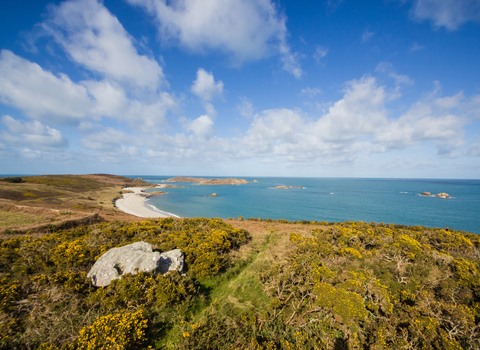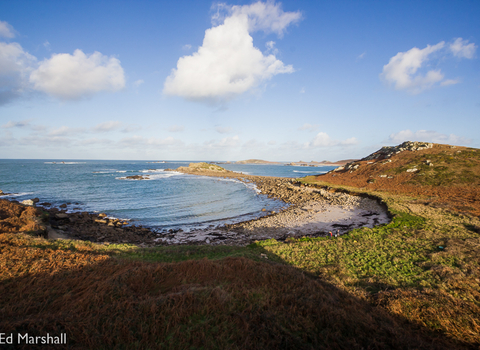Know before you go
Dogs
When to visit
Opening times
Open year roundBest time to visit
Spring, Summer & AutumnAbout the reserve
This small uninhabited island on the northwest side of St Martin’s is important for its geology, maritime heathland, grassland and breeding seabirds.
The thin, overlying soils and the harsh maritime environment has led to the development of the classic ‘waved’ heath, dominated by heather and bell heather. Other heathland plants include common bird’s-foot trefoil, heath bedstraw and English stonecrop. The small areas of short maritime turf, particularly on the north-facing slopes are important for lichens, including nationally rare species. In the spring, you can admire the carpets of pink thrift and common scurvygrass. The geology provides a visual sequence of the igneous deposits made during the Pleistocene period in the area.
There are four species of breeding seabird here, including lesser and great black-backed gulls, herring gulls and a small population of fulmars.
We regularly monitor the numbers of seabirds and the quality of heathland and maritime grassland areas for encroachment by native invasive species such as bracken. We also organised occasional visits to clear marine debris, particularly marine plastics which are known to have a detrimental effect on our marine life.




